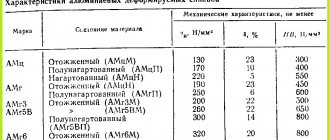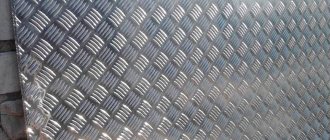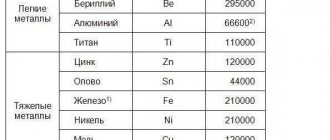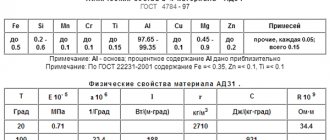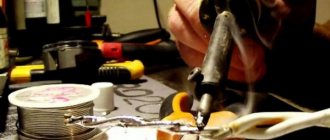Aluminum profiles have many advantages simply because they are made of aluminum alloys. In addition, aluminum profiles are easily amenable to various types of mechanical processing. Typically, tools for processing aluminum alloys are cheaper than, for example, for steel, and the processing speed of aluminum is higher than steel and many other materials.
An important property of aluminum profiles is that they can have complex cross sections to perform a wide variety of functions. They therefore require only minimal processing and thus offer savings in machining costs compared to other materials.
Mechanical processing of aluminum profiles is carried out both before and after applying protective and decorative coatings to them. This depends on the technical requirements for finished products or parts.
Protective anodizing with an anodic coating thickness of 3-5 micrometers is a good way to prevent damage to profiles during machining.
Saw cutting
Cutting usually means cutting with a saw, that is, saw cutting (Figure 1). Aluminum alloys can be cut at higher speeds than steel. Most aluminum alloys allow significantly higher cutting speeds. Therefore, in most cases, saw cutting of aluminum is economical and optimal.
Figure 1 – Saw cutting of aluminum profile [2]
The appearance of the cut and the presence of burrs depends on the aluminum alloy used, its condition, the size and shape of the saw teeth, the number of revolutions of the saw blade per minute, the number of teeth, the diameter of the saw blade and the feed speed of the saw. The number of saw teeth must be large enough to ensure a clean cut. When sawing aluminum profiles, special lubricating emulsions are usually always used.
Basic parameters for cutting aluminum [1]:
- Saw blade diameter: 300-650 mm;
- Saw blade thickness: 2.0-4.2 mm;
- Rotation speed: 1500-2800 rpm;
- Feed speed.
Organic dyeing
Coating thickness from 5 to 25 microns.
Organic coloring is a technological process of applying various dyes to the anodized surface of aluminum. Organic dyeing produces a wider range of colors than conventional anodizing. Oxide films on aluminum and its alloys obtained by electrochemical anodization are characterized by high adsorption capacity. They absorb and retain mineral salts and organic compounds – dyes – well. Organic dyes color the film by adsorbing in its pores, mainly along their outer part. The most suitable organic dyes for coloring are oxide films formed in a sulfuric acid electrolyte. The purest tones are obtained by painting oxide films on aluminum and its alloys with magnesium or manganese. When oxidized, casting alloys such as silumin form a dark, spotted film, which cannot be painted in light colors and obtain a uniform color. Organic dyeing is used in the automotive, shipbuilding, aviation and furniture industries.
Milling
When milling aluminum, a higher feed rate is used than when milling steel. Therefore, cutters for aluminum must have wider slots to remove chips. As with other types of cutting processing, high cutting speeds are used for aluminum (Figure 2).
Figure 2 – Milling an aluminum part [2]
If high quality milled aluminum surfaces are required, the milling equipment must be powerful and robust enough to be able to provide consistent tool and material feed.
How to clean aluminum from oxidation at home
If you do not clean aluminum from oxide and plaque in a timely manner, the darkened areas will increase in area over time, and subsequently it will be simply impossible to get rid of them. To carry out the hygienic procedure, you do not need to use specialized household chemicals. Cleaning aluminum from oxidation at home can be done using improvised means. Let's look at the best of them.
Mustard powder vinegar and salt
You can clean the outer surface of aluminum from oxides in the following simple way:
- In a small plate, mix equal amounts of table salt, dry mustard and nine percent table vinegar until a homogeneous consistency is obtained.
- Apply the resulting product evenly to the damp walls of the utensil.
- After fifteen to twenty minutes, rinse off the remaining mixture with slightly warmed water.
If it was not possible to clean the metal from oxidation the first time, the procedure can be repeated.
Salt
To clean an aluminum can that has turned black from oxidation, you can use regular salt. The method of application is very simple:
- mix forty grams of fine table salt and five milliliters of boiled water in a shallow container;
- apply the mixture to a clean sponge;
- intensively rub the area that has undergone oxidation;
- wait thirty to forty minutes for intense exposure.
When the specified period of time has expired, you just need to wash the utensils with any dishwashing detergent.
Acids
Acids effectively help clean aluminum from oxidation. Only for carrying out hygienic procedures is it better to choose organic compounds that have a gentle and gentle effect on the metal. Therefore, to clean an aluminum flask from darkening, it is recommended to use acids contained in lemon juice, brine, and kefir. To remove oxidation from aluminum you will need:
- completely immerse the flask, which has oxidized, in the chosen product;
- wait ten to twelve hours;
- After this time, wash the product in warm water and dry thoroughly.
The considered method is suitable not only for cleaning aluminum utensils from blackness. It can also be used to effectively remove grease from aluminum.
If the metal has heavy deposits and dirt, you should use cleaning products that contain oxalic acid. When used correctly, they can clean darkened items until they shine.
Cream of tartar
To clean aluminum spoons, crosses and other small parts from oxidation, experienced housewives advise using cream of tartar. To clean, you will need to follow these simple steps:
- pour ten liters of water into a large basin;
- pour one hundred and fifty grams of cream of tartar into the liquid and completely dissolve it;
- place objects stained by oxidation into the prepared solution and wait three to four hours;
- then walk over the surface of the parts with the hard side of the sponge;
- At the end of the procedure, rinse the aluminum in clean water.
Drilling
Like other types of machining, aluminum drilling is performed at high speeds. When working with conventional drills, they must be sharpened in such a way as to reduce the required pressure on the material and achieve a better drilling result (Figure 3).
Figure 3 – Drilling aluminum [2]
Special drills for aluminum are used only for deep holes or soft alloys. Drills for processing extruded aluminum profiles have a sharpening angle of 130º, a helical flute angle of 40º, as well as special grooves for better chip removal [1, 2].
Turning
Turning can be applied to round pipes or bars (Figure 4). Aluminum can be turned with standard or special tools and usually at high rotation speeds. Therefore, special attention is paid to eliminating vibration of the workpiece. When installing a part in a lathe, special shims are used to prevent dents and other damage from forming on the part.
Figure 4 – Turning of an aluminum pipe [2]
Good turning is achieved if the aluminum alloy produces short chips. Therefore, aluminum alloys in a hardened state are usually processed using this method. If the metal is in a soft state, it can cause sticking to the cutter, long chips, chip pileup, excessive burrs, and difficulty maintaining dimensional accuracy.
To cool cutting tools and remove chips, coolants based on mineral oils or water emulsions are used.
Metal bending and pressing
You can change the shape of a workpiece not only with a cutting or chopping tool, but also with the help of force. “Power” mechanical processing of metal in Moscow includes bending, pressing and drawing technologies. Their main difference from cutting is that they are almost completely waste-free. Except for cases when the workpiece that comes off the machine requires finishing, for example, grinding.
Prices for mechanical processing in Moscow
Even in the capital, which is traditionally considered an “expensive” city, the cost of mechanical processing can remain in a price segment favorable to the customer. At the same time, there are different calculation criteria for different technologies. Turning and milling services are often priced per hour of work or per part, cutting - per standard or linear meter, drilling - per hole, welding - per centimeter of seam. Having studied several offers, the customer can always choose the most profitable one.
Custom metalworking services
Do you have blanks, but have not yet decided on how to process them? Do you want to save money, but not on quality? Contact us - and we will not only provide you with metal machining services, but also help you choose the optimal technology.
How to order machining services from us?
Our cooperation will begin with your application.
Fill out the online form on this page, briefly describe the situation, attach drawings or other documents if possible, leave coordinates - and our manager will call or write to you as soon as possible. Together we will discuss all the nuances of metal machining services for your specific case. You will pay for the order only after concluding the contract. The work will be completed within the time frame that we determine together. Our metalworking shop guarantees compliance with all technological standards and high quality of each workpiece or part. Contact us!
Thread cutting on aluminum
Internal and external threads on aluminum parts are performed using all conventional machining methods, as well as the rolling method with plastic deformation of the material (Figure 5). The best threads are obtained on thermally hardenable aluminum alloys. Up to a diameter of 6 mm, ordinary taps for steel are used, and for larger diameters, special taps for aluminum are used. Aluminum taps have larger flutes to remove chips.
To make external threads, conventional dies are usually used, as well as plastic rolling methods without the formation of chips.
Figure 5 – Thread cutting in aluminum [2]
Features of cleaning from sunflower oil
A viscous liquid is a lipid mixture that does not interact with water. Therefore, other methods and means are used for removal. Substances are selected that can penetrate the fat molecules and remove them from the surface.
Mustard
The product is used in powder form. The bulk mixture is diluted with hot water. The proportion is as follows - for 1 liter of water take 2 tbsp. l. mustard powder. The ingredients are mixed so that there are no lumps, and the liquid is poured into the bottle up to the neck. After 2-2.5 hours, the liquid is drained and the container is rinsed with clean water. Repeated cleaning procedure will improve the effect.
Flour
The bulk mixture is used due to its ability to absorb various liquids. The bottle is completely filled with water, after which flour is added. The result should be a white liquid. The container is turned upside down so that the dirty places are covered with the solution. After a while, a handful of rice is added to the vessel. After shaking, the bottle is emptied of its contents. After washing the vessel with water and detergent, rinse.
Boiling
This method comes in handy if you have accumulated a lot of dirty containers and don’t have enough time to clean them. A large saucepan is filled with dirty vessels and filled with water to the very top. A small amount of detergent is added to the water.
The pan with the container is placed on the stove over medium heat. Boiling should be carried out for 25-35 minutes. After turning off the stove, leave the contents of the pan to cool. The container is taken out and washed with clean water. It is advisable to use a piece of laundry soap instead of detergent.
